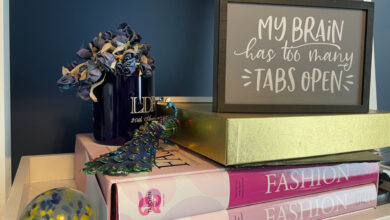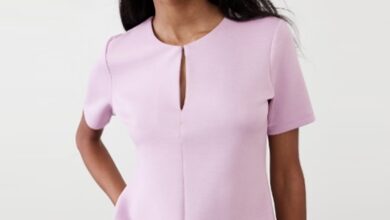Renovating Our Japandi Modern Beach House in Malibu
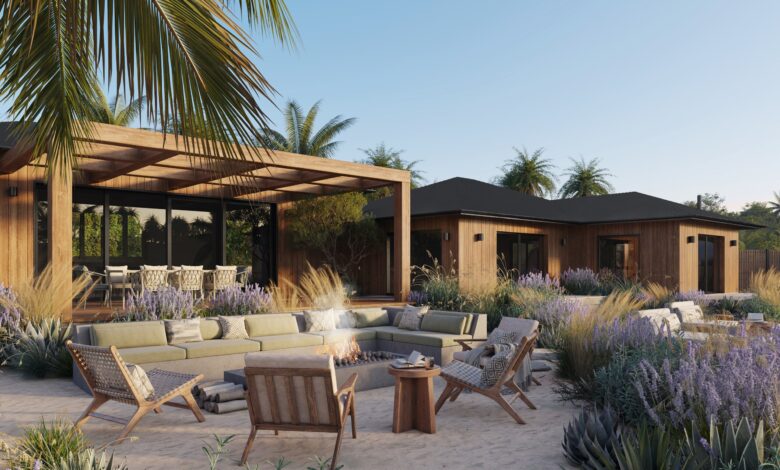
It’s no exaggeration to say that I’ve been waiting to share this post with you for years. If you’ve been following for a while, you’ll know that in 2020, we went all in on our big dream to renovate a beach house in Malibu. We fell in love with an acre of land overlooking Zuma Beach, with views of a beautiful horse farm and gardens overflowing with wild roses and olive trees. The breezes carried the scent of jasmine and salt water, and at night the sun set just at the point where the ocean meets the mountains. It was love at first sight.
A couple of months later, we got the keys to the house and our journey began. We hired Doug Burdge, our beloved Malibu-based architect, to reinvent the floor plan and add 1,000 square feet. We got all our ducks in a row and submitted everything to the city. And then began three years of waiting as we slogged through the permitting process with the City of Malibu. We didn’t know at the time how much patience and uncertainty this dream of ours would require, but throughout, we held tightly to our vision and refused to give up.
In my Substack today, I shared a lot more about our personal journey and what it taught me, and the range of emotions that come from building in a place that’s so recently been rocked by tragedy. If you want the full story (including why we’re “crazy” enough to build in a high-risk area) head over to the post. Over here, we’re kicking off the first post in our Renovation Diaries series, because we have officially begun construction!
Since I’m going to have a lot to share about our Zuma Beach House project in the coming months, this will be the official spot where you can follow along. My hope is that, for those of you who are as design-obsessed as me, it will become a resource for your own renovation journeys, as well as a place for inspiration and ideas. We’ll be getting granular on the details: how we designed the kitchen island, exactly what materials we’re using in every space, and solving those tricky decisions that come up in every renovation project. And yes, I’ll be asking you to weigh in, too.
It feels right to begin with a birds-eye view: a zoomed-out look at how the house will change, what we’re keeping and what we’re changing, and an overview of the design style and references that have inspired us.
First, the “Before”
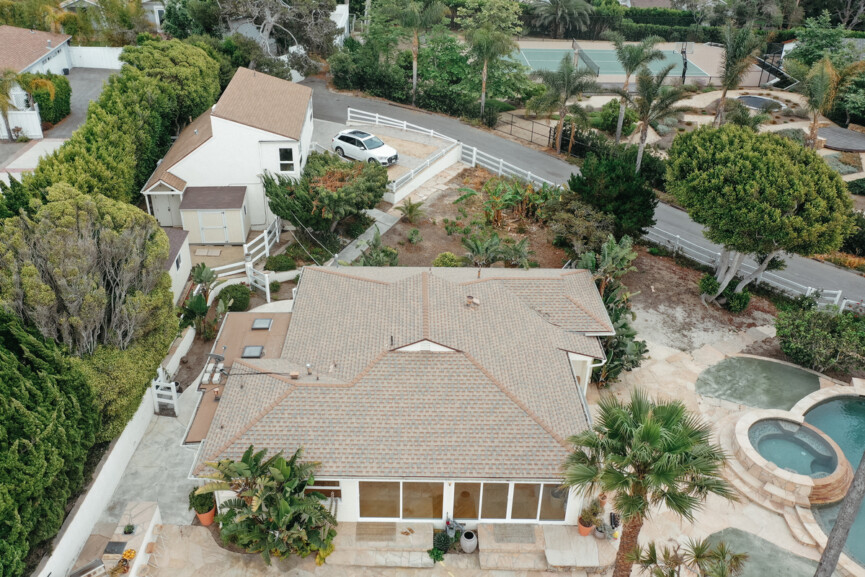
What to know about the current house:
- 1950’s ranch-style bungalow—although it has some charming elements, this house is really all about the property.
- 1,400 square feet with two bedrooms and two bathrooms
- 600-square-foot guest house above the garage
- The property is just under an acre overlooking Zuma Beach, with towering palm trees and lush citrus and avocado trees.
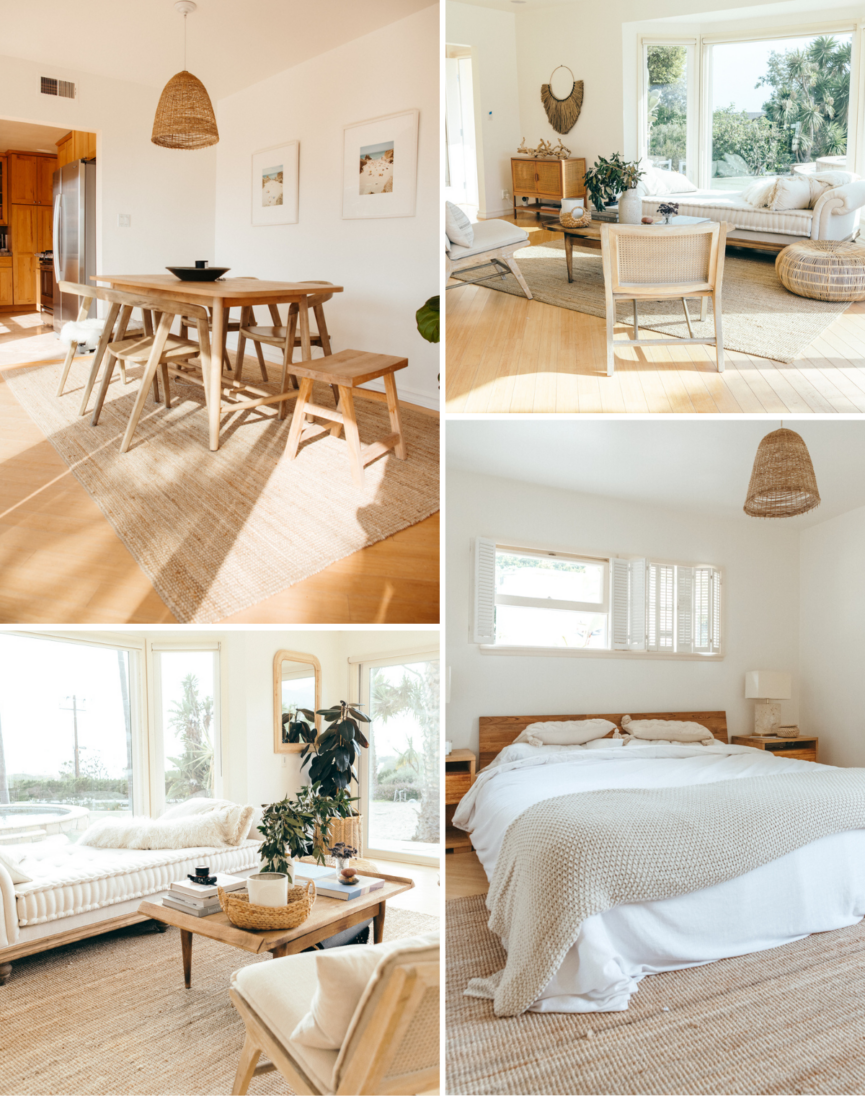
Issues with the current house:
- A large electrical pole. It was smack dab in the center of our beach view. After two years of working with the city, we finally got it taken down and had the power lines buried. It was a major investment, but so worth it to open up the view.
- No clear front entrance. While there technically is a front door, it’s been used by exactly zero people since we bought the house. When you pull into the driveway, the path leads you down a sidewalk straight to the back door. So, no one is quite sure whether to circle around to the front of the house, or enter straight into the door of our laundry room.
- Lack of space. Aside from the awkward floor plan, we’re also lacking space in general. It’s a cozy fit for our family of four, so when family or friends come to stay with us, we’re bursting at the seams. There’s also nowhere for me and Adam to work (which is a problem when you both work from home), so one of us usually ends up taking calls from the bedroom while the other sits at the kitchen table with Air Pods in, praying that the kids won’t get into a fight in the meantime.
- Closed-off rooms. If you’ve seen our Austin house, you know that Adam and I are big on an open layout. We gravitate toward an airy vibe, so a house made up of small rooms that are separated from each other makes us feel claustrophobic. We can’t wait to open this space up.
- Low ceilings. In my opinion, low ceilings are one of the most concerning things about a house because they can be really difficult to change—and often, can lead to a house feeling dark and crowded. So, when we first considered the purchase of this house, making sure that we’d be able to raise the ceilings was a prerequisite. More on that later.
- Tucked-away kitchen. For me, the kitchen is the heart and center of a home, so having a small kitchen awkwardly tucked into the corner of the house (with dated granite and cabinetry) was going to be the first thing to go in any renovation.
I gave a full tour of the old house here and answered a bunch of FAQs about the property and location, if you want to dive deeper.
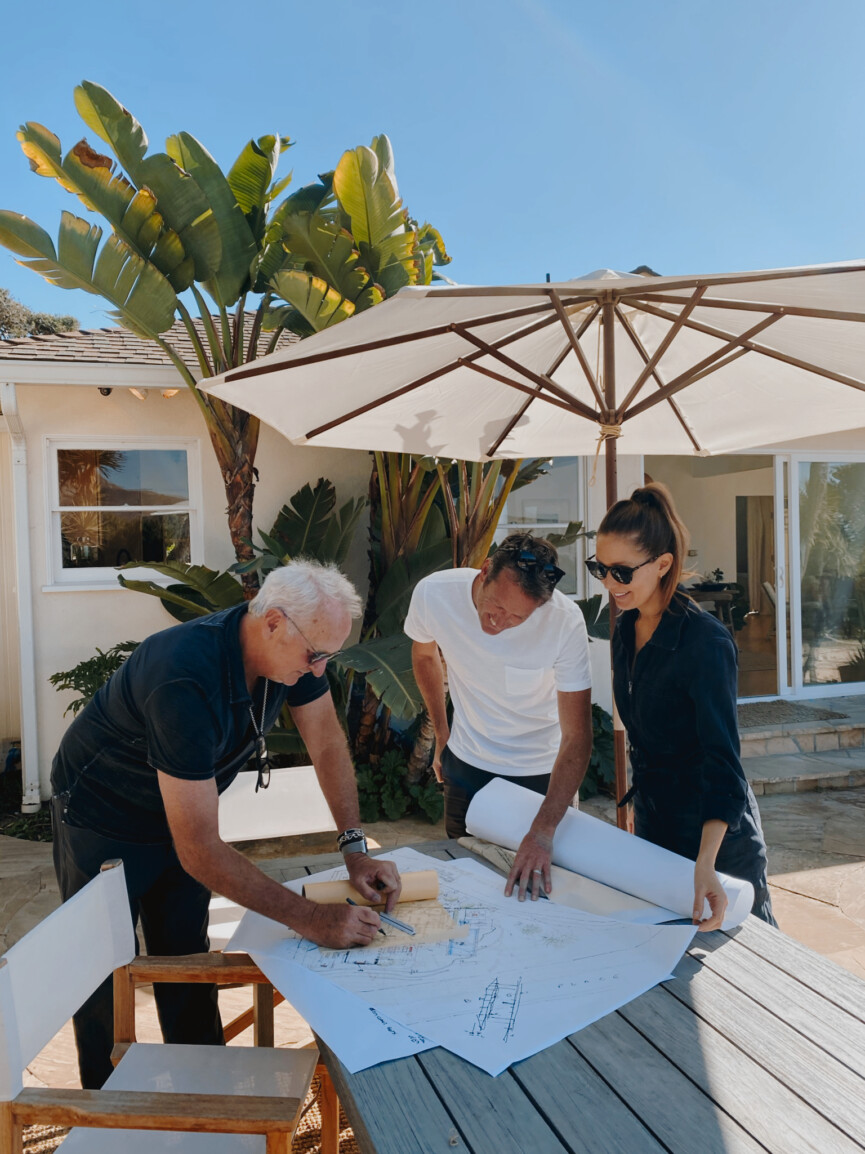
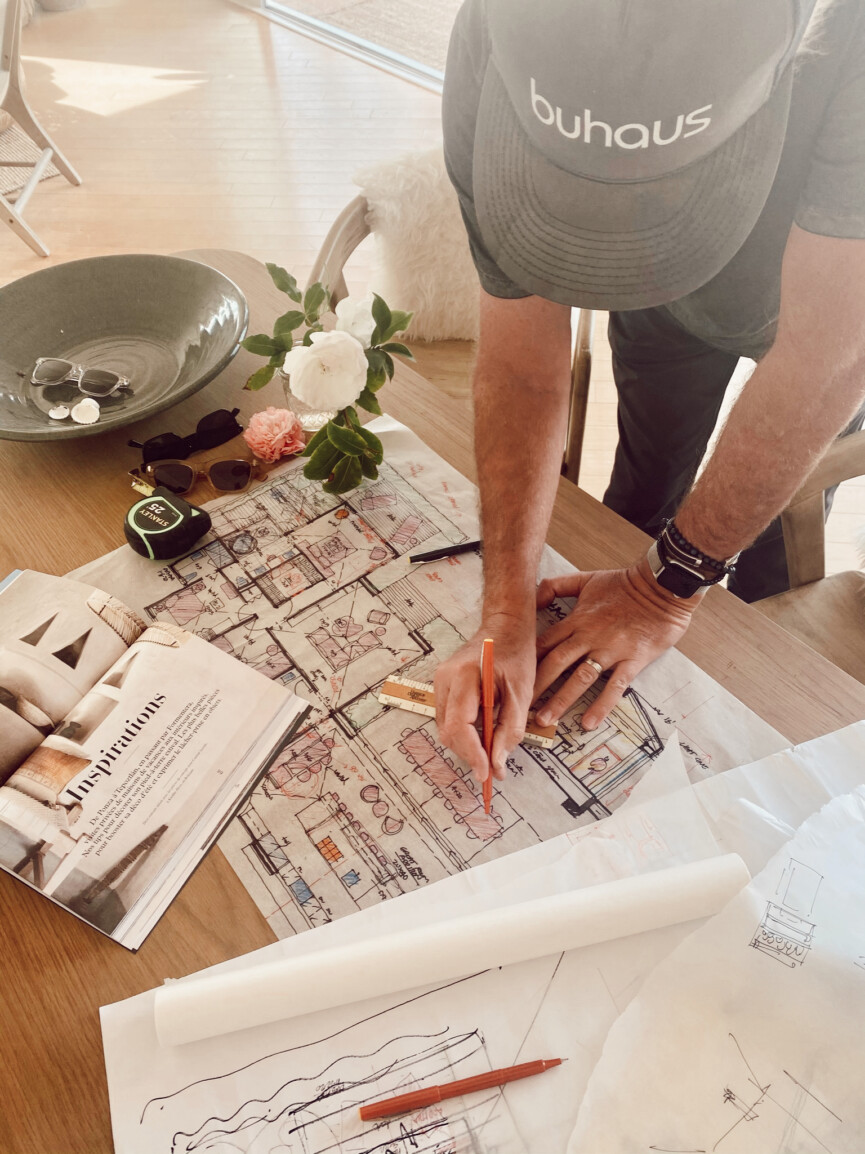
The Renovation Plan
- The addition: We’ll add a 1,000 square foot great room (a large open kitchen with living space). Our architect Doug brilliantly found a way to keep the original footprint of the current house, but we’ll rework the non-load-bearing walls to completely reimagine the interior floor plan.
- Create a clear front entrance. As mentioned above, the current house lacks a clear entrance and leaves guests confused about where they should go. In the remodeled layout, we want anyone who arrives at the house to know exactly where to park, with a clear plan for how to enter. Did you know there’s an actual name for this topic? It’s wayfinding, and includes principles like creating “well-structured paths” and avoiding “too many navigational choices.” Not sure why I’m obsessed with this topic, but I find it endlessly fascinating.
- Open floor plan. For the areas where we live, eat, and play together as a family, I prefer a wide-open space that preferably opens to the outdoors. If you keep reading, you’ll find out how we’re achieving that with a 1,000-square-foot addition that is basically one big kitchen.
- Vaulted ceilings. When we considered purchasing this house, I knew that for the investment, we’d need to be able to raise the ceilings. Thankfully it wasn’t too complicated here, especially since we’re keeping it to one story. We’ll be vaulting the ceilings, which means that we’re extending into the triangular space between where a ceiling would normally sit and the top of the roof. This will not only help the rooms feel larger than they actually are, but it’ll also let more natural light into each space.
- Room for guests. While we wanted to keep this a fairly modest-sized house, we also knew that this was a place we anticipated hosting family and friends for years to come. By adding a guest suite and a bunk room, we’d make room for an additional four to five people to stay with our family in the main house.
- Big kitchen for entertaining. Since the kitchen is my happy place, I naturally want to be able to spend time in it surrounded by family and friends. I need a kitchen large enough to accommodate cooking projects, recipe photo shoots, and lots of people, since most dinner parties end up with everyone gathered around the island. Based on the current tucked-away corner kitchen, I knew this would require a complete reimagining of the space.
- Natural light. The current house already has great light, but we knew that by raising the ceilings and adding more windows and doors to the back of the house, we could create an even more light-filled space.
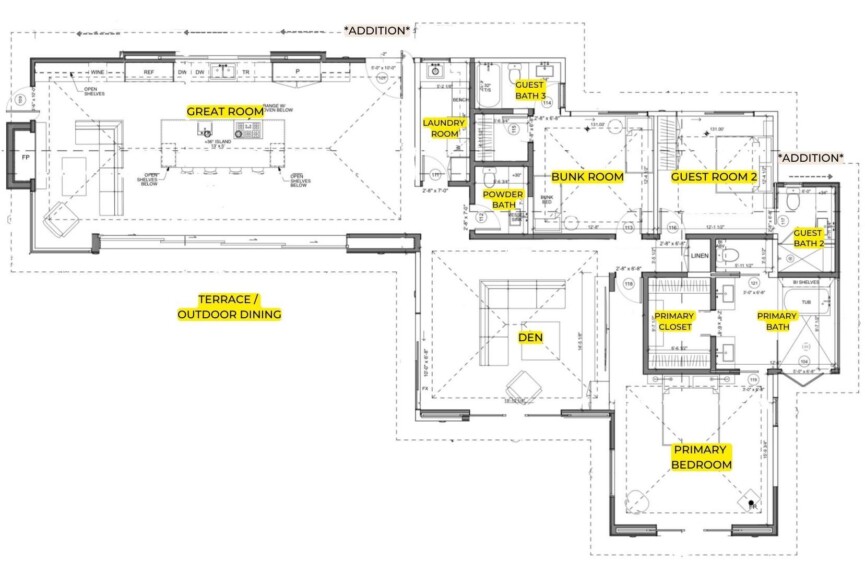
The Style: Japandi Modern Beach House
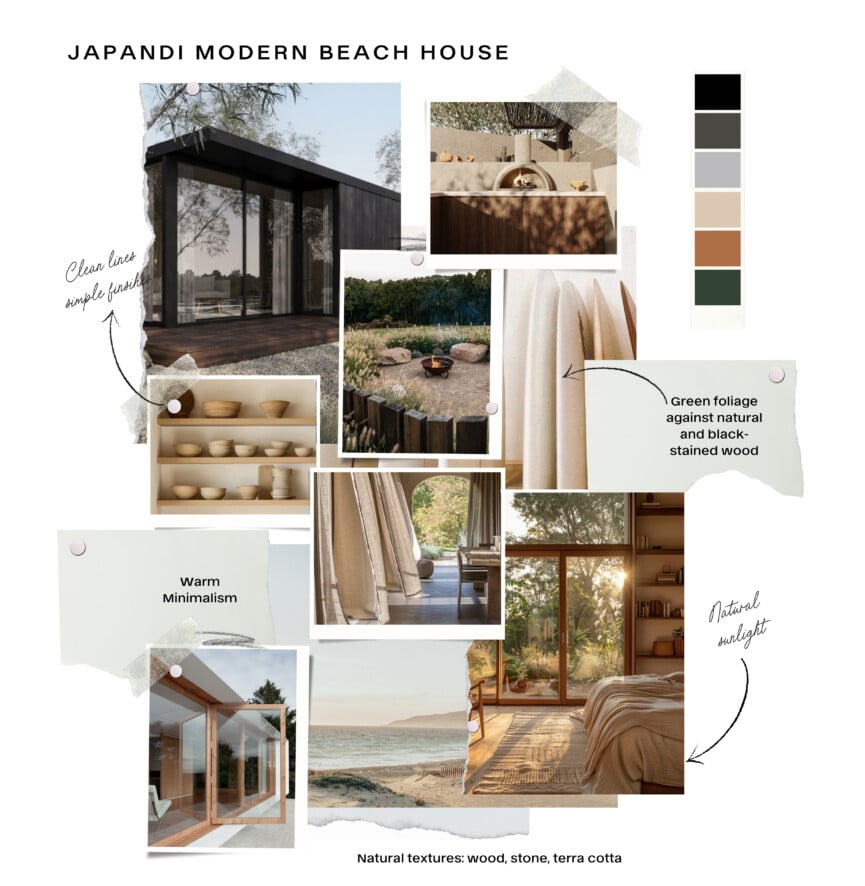
We’re calling this a Japandi Modern Beach House because it combines the minimalism, clean lines, and natural materials of Scandinavian design with the warmth, tranquility, and focus on craftsmanship from Japanese design. Our priorities are simplicity, functionality, and harmony, bringing the indoors and outdoors together in a seamless flow. We want this house to feel like a sanctuary, using natural materials, neutral tones, and handcrafted details.
(Here’s another article I wrote about Japandi design and how to create it in your own home here.)
The Visualizations: Where We’re Headed
We’ve been working with the team at YouSee Studio to create realistic 3D renderings of our plans so we can truly visualize what we’re creating. I can’t recommend this process enough. Not only has it allowed us to make spacial decisions about the architecture, but being able to test out different materials and room layouts has already saved us from multiple decisions we would have regretted.
I can’t wait to share these visualizations of each space in the house as we go through the design process over the next few months—we’ll be able to look at different comparisons and options together as we make all those final decisions to bring the project to life.
Here’s the property overview that shows the new exterior. To the left, you can see the great room addition with the outdoor terrace. The right side is the existing house that becomes the bedrooms, bathrooms, and media room.
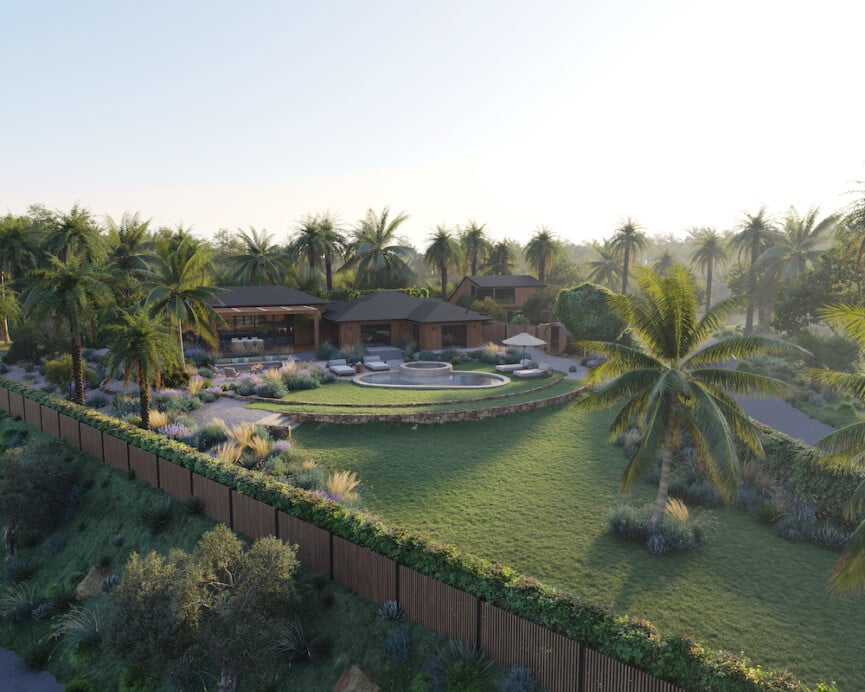
Features of our Japandi Modern Beach House:
It’s important to Adam and me that every element of this project is an intentional blend of beauty and functionality. Here are a few design decisions that are guiding the entire project:
Exterior Design:
- Scandinavian-inspired wood cladding. We’re using beautiful redwood from Humboldt Sawmill Company in Northern California.
- Large windows and doors that blur the lines between indoors and outdoors.
- Corrugated metal roofing, adding a contemporary edge to the minimalist design.
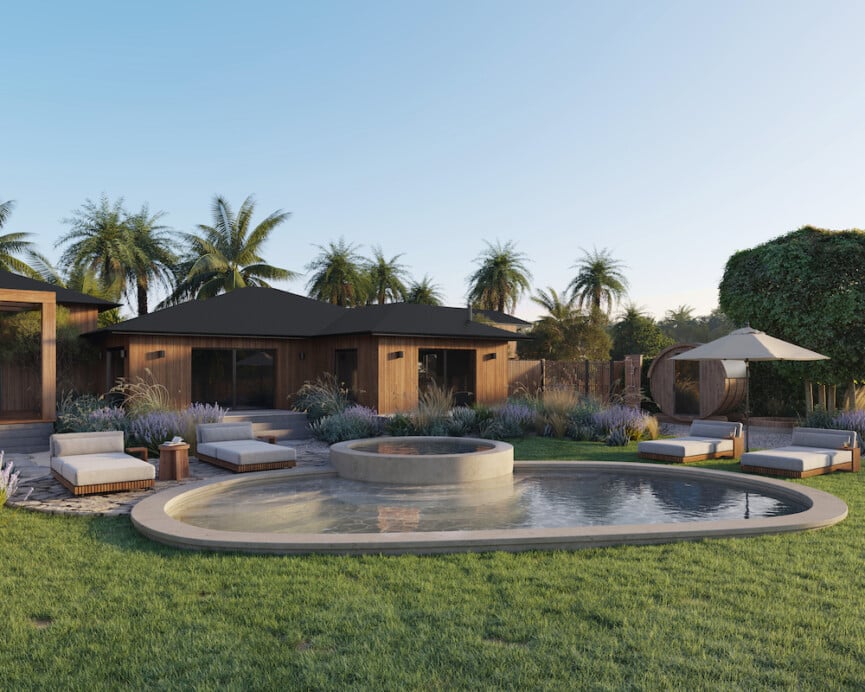
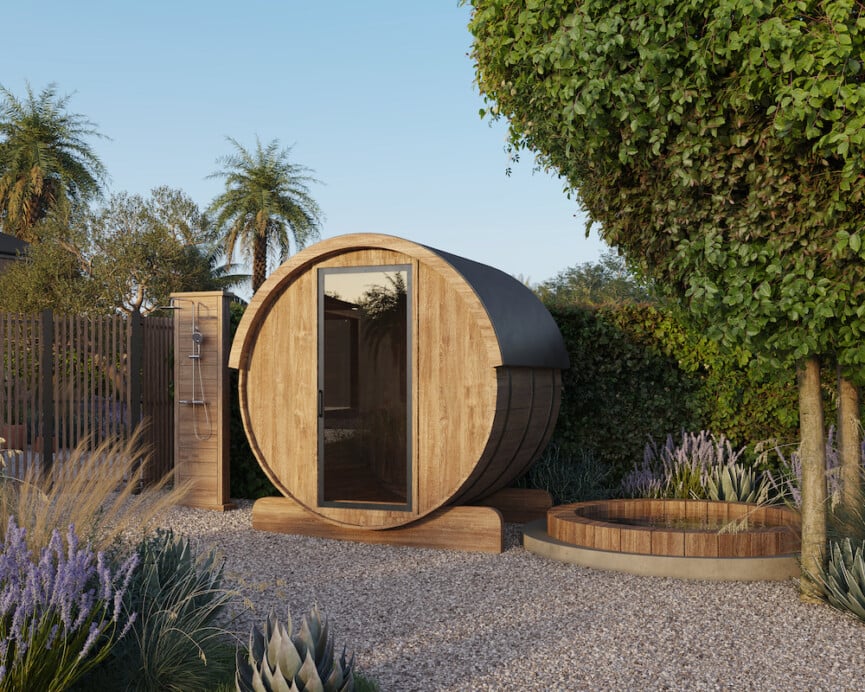
Interior Materials:
- Natural wood floors and cabinetry for warmth and texture. Our floors are by Stuga, a direct-to-consumer wood flooring company that’s based in the US and works with Scandinavian manufacturers.
- Stone accent walls that ground the space and reflect the surrounding environment. I can’t wait to show you guys the stone that we chose from Eldorado Stone—it’s gorgeous and will be such a statement.
- Simple, functional layouts that maximize space and light.
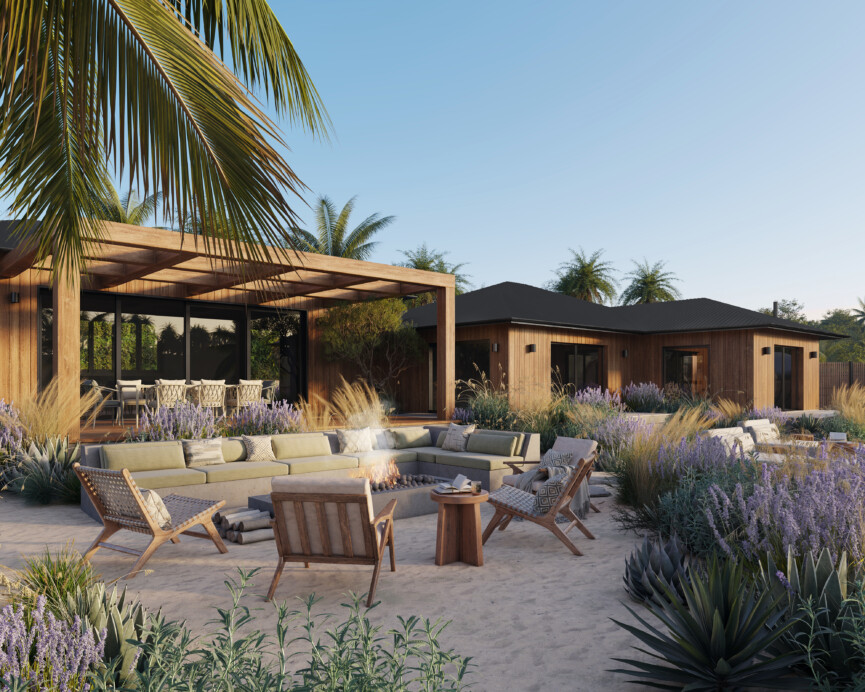
Design Philosophy:
- A focus on natural elements like olive and citrus trees, agave, and native grasses in the landscape.
- A neutral color palette of black, wood, creamy plaster, concrete, and stone for a calming vibe.
- An emphasis on craftsmanship and high-quality, long-lasting materials.
Overall Atmosphere:
- A blend of Scandinavian hygge (coziness) with Japanese wabi-sabi (beauty in imperfection).
- Spaces designed for peace, relaxation, and connection to nature.
The Team
https://camillestyles.com/wp-content/uploads/2025/01/CS_Landscape_Final_Firepit-scaled.jpeg
2025-02-02 05:00:00

